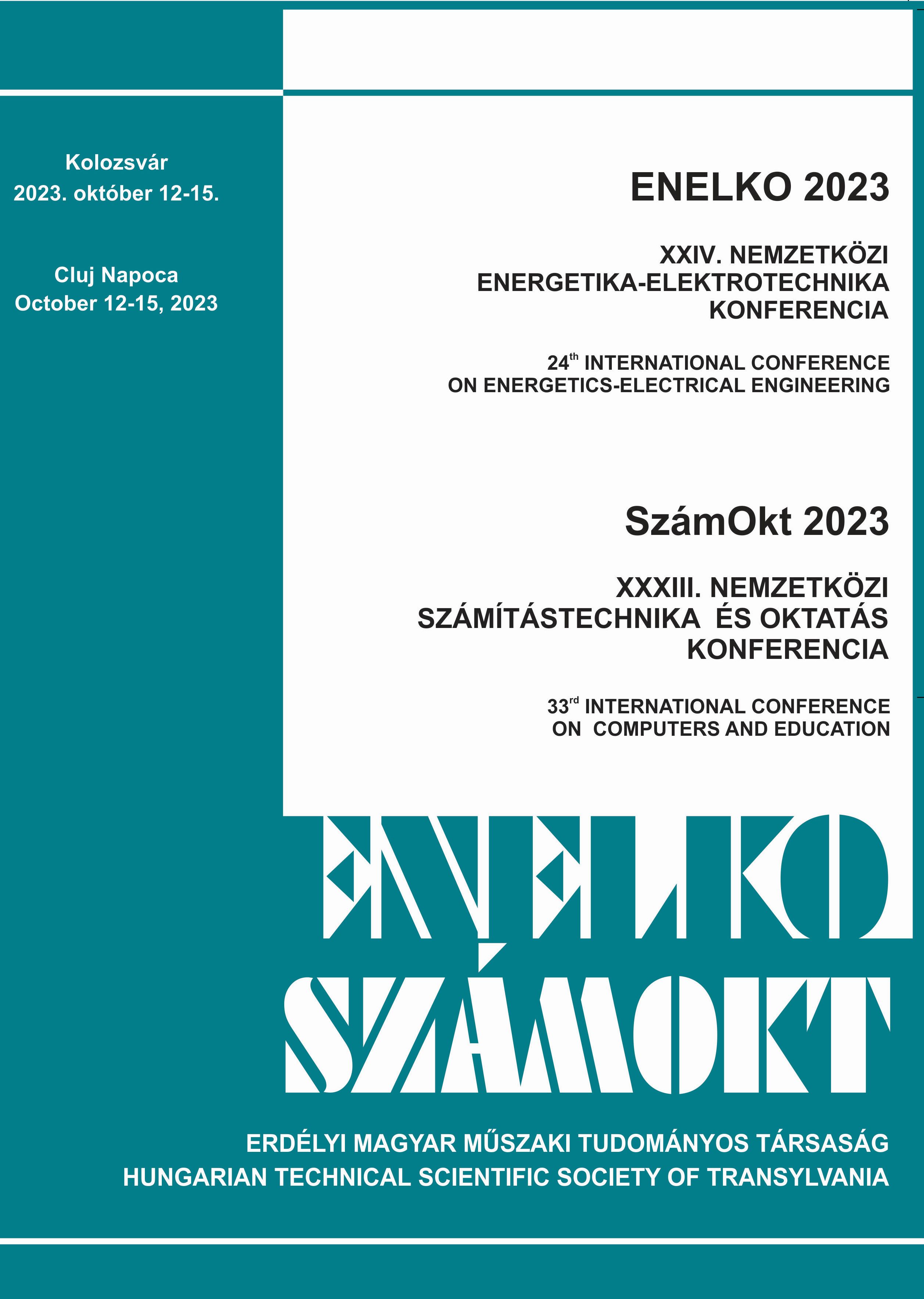LSTM modellek felhasználása a meghibásodások előrejelzésében
Leveraging LSTM Models for Failure Prediction
Keywords:
LSTM, algorithm, classification, Artificial intelligence, machine learning, /, algoritmus, osztályozás, mesterséges intelligencia, gépi tanulásAbstract
In today's rapidly evolving industrial landscape, the prevention of machinery and equipment failures is of paramount importance. Accurate and timely failure prediction can not only reduce operational downtime but also save resources and improve overall safety. This article presents an in-depth exploration of the application of Long Short-Term Memory (LSTM) models for failure prediction in industrial settings. The core objective of this research is to harness the power of LSTM neural networks to analyze time-series data and identify patterns that precede equipment failures. We delve into the theoretical foundations of LSTM networks, highlighting their ability to capture long-term dependencies in sequential data, making them well-suited for modeling the dynamics of industrial systems.
Kivonat
A mai gyorsan változó ipari környezetben gépek és berendezések meghibásodásainak megelőzése kiemelten fontos. Az pontos és időben történő meghibásodás-előrejelzés nemcsak csökkentheti a működési leállásokat, hanem erőforrásokat is megtakaríthat, és javíthatja az általános biztonságot. Ez a cikk egy részletes vizsgálatot mutat be a Hosszú rövidtávú memória (Long Short-Term Memory, LSTM) modellek alkalmazásáról a meghibásodások előrejelzésére ipari környezetekben. A kutatás alapvető célja a LSTM neurális hálózatok erejének kiaknázása az idősoros adatok elemzéséhez és a meghibásodásokat megelőző mintázatok azonosításához. Elméleti alapjaikba mélyedünk, kiemelve képességüket a hosszú távú függőségek rögzítésére a szekvenciális adatokban, ami kiválóan alkalmas az ipari rendszerek dinamikájának modellezésére.
References
Graves, A. Generating sequences with recurrent neural networks. arXiv preprint arXiv:1308.0850 (2013).
Sutskever, I. Oriol V., and Quoc V. L. Sequence to sequence learning with neural networks. Advances in neural information processing systems. 2014.
Malhotra, P., Vig, L., Shroff, G., & Agarwal, P. (2015, April). Long Short Term Memory Networks for Anomaly Detection in Time Series. In Esann (Vol. 2015, p. 89).
Bengio, Y., Simard, P, and Frasconi, P. Learning long-term dependencies with gradient descent is difficult. IEEE transactions on neural networks 5.2 (1994): 157-166.
Graves, A., Schmidhuber, J. Framewise phoneme classification with bidirectional LSTM and other neural network architectures. Neural networks 18.5-6 (2005): 602-610.
Cai, M., & Liu, J.. Maxout neurons for deep convolutional and LSTM neural networks in speech recognition. Speech Communication, 77, 53-64. 2016
Gers, Felix A., Eck, D., Schmidhuber, J. Applying LSTM to time series predictable through time-window approaches. Neural Nets WIRN Vietri-01. Springer, London, 2002. 193-200
Hornyák, O., Iantovics, L. B. AdaBoost Algorithm Could Lead to Weak Results for Data with Certain Characteristics. Mathematics, 11(8), 1801. 2023.
Liu, K., Shang, Y., Quan, O., & Widanage, W.D. (2021). A Data-Driven Approach With Uncertainty Quantification for Predicting Future Capacities and Remaining Useful Life of Lithium-ion Battery. IEEE Transactions on Industrial Electronics, 68, 3170-3180.
Murtagh, F. (1991). Multilayer perceptrons for classification and regression. Neurocomputing, 2(5-6), 183-197.
Medsker, L. R., & Jain, L. C. (2001). Recurrent neural networks. Design and Applications, 5(64-67), 2.
Sherstinsky, A. (2020). Fundamentals of recurrent neural network (RNN) and long short-term memory (LSTM) network. Physica D: Nonlinear Phenomena, 404, 132306.
Hochreiter, S., & Schmidhuber, J. (1997). Long short-term memory. Neural computation, 9(8), 1735-1780.





